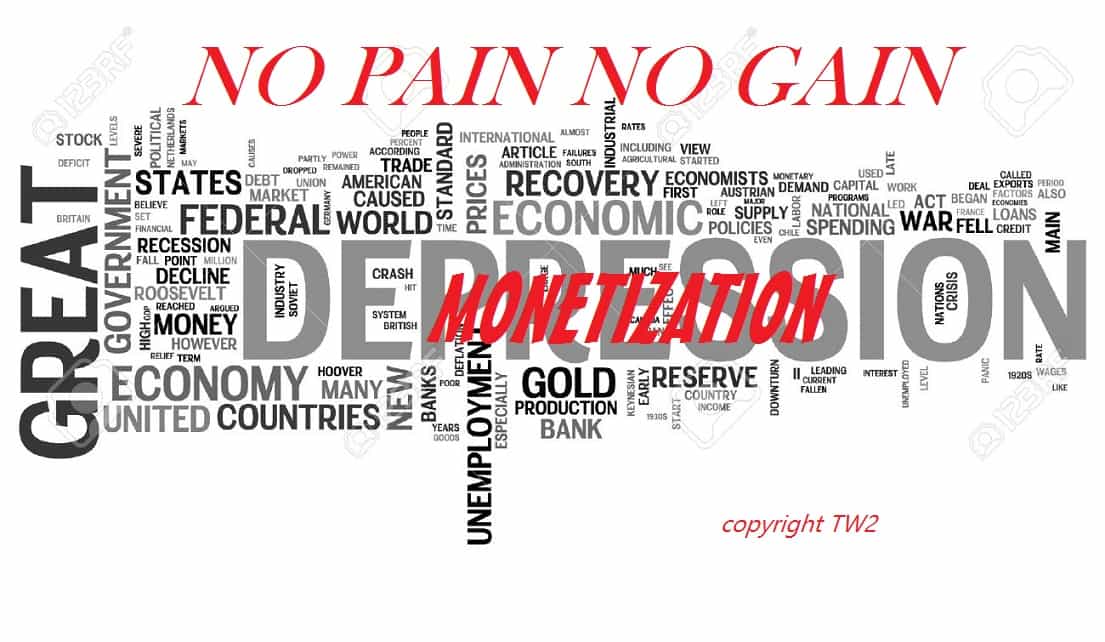In part 1, we covered which sectors are prone to hit by Demonetization on both short-term and long-term horizon. But it is the economy that is driving the markets and sectors. The economy is also important as it is a summation of entire country’s well being. Emotions are linked to the economy as economic news builds people’s mood. Demonetization is one such economic event which has drastically changed everyone’s way of thinking. Social media is full of reactions. The common man is tweeting, commenting & making videos express what they feel.
In fact, some are hilarious as, when clarification came on Gold holding that males can have 10 gms without worry (if bought from genuine income), I really had a day when I saw this creativity:

And smart marketers have started using the event to advertise…

Humor apart, these measure needs to be seen in the context of other far-reaching measures affected by the current Government, including Goods and Services Tax (GST) act, Aadhar, Jan Dhan Yojana, and Unified Payment Interface (UPI).
All these measures put together should help in shifting significant portions of the informal economy (estimated at 40% of GDP by NIPFP) into the formal economy.
Overall, I believe that the demonetization exercise should help to accelerate financialisation of the Indian economy over medium to long term.
However, the demonetization measure is likely to be negative for growth in the very near term until the level of cash in circulation reverts to normalcy. A sudden withdrawal of INR 1.4 trillion of cash (9% of GDP) represents substantial monetary tightening, which could result in deflationary forces due to lower aggregate demand.
Rate Cut: I believe that there exists a scope for a 50 bps policy rate cut (by the RBI) from current levels over next 1 year, which may be undertaken in order to offset the deflationary impact.
I expect aggressive rate cuts by banks, thus helping RBI in achieving better monetary transmission (Cheaps Loans and Low rate FDs so that investment moves to capital markets). The lower interest rates (Banks have already started lowering rates), along with a return to normalcy for cash in circulation should set the stage for a stronger recovery in aggregate demand in FY18.
Impact on the RBI balance sheet
- The RBI’s currency liability remains unchanged if all these notes are exchanged for legally valid currencies issued by the RBI.
- In case some of these notes are not exchanged, then the RBI’s currency liability goes down to that extent. They can issue fresh notes and this will come back in the economy as government spending. (If they take sane decisions, the money can come in form of infra and socio growth assets like building highways and investing in education system)
Economic Impact
| Variable | NEAR Term Impact | LONG Term Impact |
|
Currency in circulation |
INR 500 & INR 1000 notes constituted ~86% (INR 14.8 too) of the total currency in circulation. A cap on withdrawal along with a decrease in the usage of these notes will bring down currency in circulation. | Once new notes are amply available, the currency in circulation is likely to improve substantially. |
| Negative in Near Term, but Neutral in Long Term | ||
|
Inflation |
Given, the high share of cash transactions in rural India, the demand is likely to decrease. Lower demand could weigh negatively on prices. There could be a drop in the rural inflation. | Demand is likely to recuperate post-government spending, which should have positive impact on employment and disposable income |
| Positive in the Near Term, but Neutral in Long Term | ||
|
GDP |
Consumption demands likely to decrease, with the decline of currency in circulation. Moreover, there would be an adverse impact on informal sectors. As a result, there could be a dip in 3QFY17 GDP. | There could be an increase in direct tax collections, which could pave way for increase in investment by the government. |
| Negative in the Near Term, but Positive in Long Term | ||
|
Government finances |
As a share of the unaccounted money makes its way into the formal channel, the government could benefit from higher income tax collections. This should help government’s FY17 fiscal deficit target, especially post the shortfall in anticipated spectrum revenues. | This could infuse a transition from unorganized to organized sector, which could thereby enhance the government’s ability to tax commercial transactions. As a result, there is a likely structural improvement in tax to GDP ratio in Indian economy. |
| Positive in the Near Term as well as Long Term | ||
|
Bond yields |
Improvement in bank deposits is likely to lead to higher SLR (Statutory Liquid Ratio) demand. This could augur well for a fall in the government bond yields. | With expected improvement in tax buoyancy, the supply of g-secs is likely to get more rationalized, putting downward pressure on yields. |
| Positive in the Near Term as well as Long Term | ||
Overall a lot of pain in near term and then we can expect some visible difference.
My advice: Just have some decent money for cash requirement, rest pay through paytm or other wallets or cheque. Let consumerism take some rest and keep paying for your committed investments like SIPs. Include poor, illiterates and senior people around you in this event by guiding them to digitalize their payments. Do share your views.
And don’t forget to forward/share this article to whom it matters.










